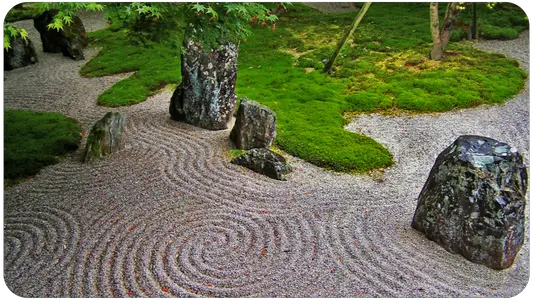A kyaung ((Burmese, ဘုန်းကြီးကျောင်း, romanized: [pʰóʊɴdʑí tɕáʊɴ]) is a monastery (vihara), which is composed of the homes and workplaces of Buddhist monks (bhikkhus).
Burmese kyaungs are also sometimes inhabited by novices (samaneras), lay assistants (kappiya), nuns, and young acolytes who observe the five precepts (ဖိုးသူတော် phothudaw).1
Kyaungs are usually made of wood, which means that few of the monasteries that existed in the 18th century remain.2 Kyaungs exist in Myanmar (Burma), as well as in neighboring countries with followers of the Theravada Buddhist tradition, including adjacent parts of China, such as the Dehong Dai and Jingpo region.
It is traditionally the center of social life in Burmese villages, serving as a school and community center, as a place to offer donations to monks, as a venue for Buddhist festivals, and as a center for observing uposatha.
The monasteries are not created by the members of the sangha, but by lay people who donate land or financial resources to support and maintain the institutions.
Usage and etymology
The term kyaung in modern Burmese (ကျောင်) comes from the old Burmese kloṅ (က္လောငး). 3 The strong link between religion and schooling is reflected in the fact that kyaung is the same word used to refer to non-conventional schools4 Kyaung is the term that also describes Christian churches, Hindu and Chinese temples. Islamic mosques are the exception, described by the Hindi term bali (ဗလီ).
Kyaung has also become borrowed in Thai languages, including the term shan kyong (spelled ၵျွင် or ၵျေႃငး)5 and in Thai nuea as zông 2(ᥓᥩᥒᥰ, rendered in Chinese: zàngfáng).
Typology
In contemporary Burma, kyaungs can be classified into several groups, including monastic colleges called sathintaik (စာသင်တိုက်) and remote monasteries called tawya kyaung (တောရကျောငာင်). In this country, the main university towns are Pegu, Pakokku and Sagaing.2
History
In pre-colonial times, the kyaung functioned as the source and basis of education, providing near universal education for males and representing a "bastion of civilization and knowledge," being an "integral part of the social fabric of pre-colonial Burma. "
16 The connections between kyaungs and education were reinforced by the monastic entrance examinations instituted in 1648 by King Thalun during the Toungoo dynasty.7
Classical learning was transmitted through the monasteries, which served as instlations for Burmese students to reach higher education and, through this, achieve social advancement in the royal administration after leaving monastic life.8 Thus, almost all historical figures of this period, including Kinwun Mingyi U Kaung, spent their formative years in the monasteries.
A traditional monastic education developed in the time of the Pagan reign, along with the proliferation of Theravada teachings in the 12th century.6
The curriculum in the kyaungs included Burmese language, Pali grammar, and the study of Buddhist sacred texts, emphasizing discipline and morality based on codes of conduct (such as the Mangala Sutta, Sigalovada Sutta, Dhammapada, and Jataka tales), prayers, and elementary arithmetic.1
Influential monasteries maintained large libraries with manuscripts and codices.8</ref> The ubiquity of monastic education is attributed to the high literacy rate of Buddhist men in Burma.9 the 1901 Indian census attested that 60.3% of Burmese Buddhist men were literate, compared to 10% in British India as a whole.9
Kyaungs called pwe kyaungs (ပွဲကျောင်) also taught classes on secular subjects, including astronomy, astrology, medicine, massage, divinatory arts, horsemanship, use of the sword, bow and arrow, crafts, boxing, wrestling, and dance.10
During the Konbaung dynasty, several kings, including Bodawpaya, suppressed the proliferation of pwe kyaungs, which were seen as potential hotbeds of rebellion.10
Sumptuary law determined the construction and ornamentation of Burmese kyaungs, which were among the few structures in precolonial Burma to have richly ornamented multi-tiered roofs, called pyatthatat.11 Balusters characterized royal monasteries.
Following the end of the Burmese monarchy after the third Anglo-Burmese war, monastic schools were largely replaced by public schools.6





